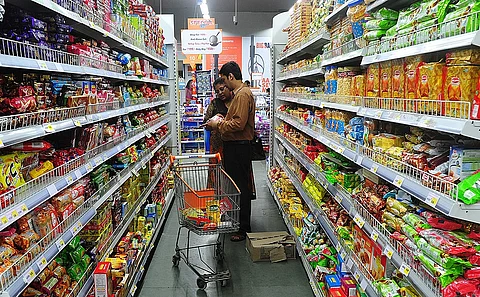

On the occasion of India's 79th Independence Day, Prime Minister Narendra Modi delivered a historic and his longest ever I-Day speech of 103 minutes. During his independence day speech, Prime Minister Modi made a plethora of announcement. However, what caught entire India's attention was GST Reforms which PM Modi announced as 'Diwali Gift' for the people of India.
PM Modi said, "This year, a big gift is going to be received on Diwali. It has been 8 years since GST came into existence. We have reviewed it. We have simplified taxation by reforming it.
We are bringing next generation GST reforms. We will reduce tax for common people, everyday things will become cheaper, people will benefit a lot."
A few month back, the prices of items used by common man like toothpaste, utensils, clothes, shoes may come down, because the government is preparing to give relief to the middle-class and lower-income families by reducing GST.
According to reports, the government can completely abolish the 12% GST slab or bring the items currently taxed at 12% into the 5% slab. This restructuring will include items used by the middle-class and economically weaker people.
Currently, GST has four slabs of 5%, 12%, 18% and 28%.
Milk powder
Sanitary napkins
Hair oil
Soap
Toothpaste
Umbrellas
Sewing machines
Water filters and purifiers
Pressure cookers
Aluminium/steel cookware and utensils
Electric iron
Water heaters (geysers)
Vacuum cleaners
Washing machines
Bicycles
Vehicles for persons with disabilities
Public transport vehicles
Ready-made garments
Shoes (Rs 500 to Rs 1,000)
Vaccines
Diagnostic kits for HIV, Hepatitis, TB
Certain Ayurvedic and Unani medicines
Exercise books
Geometry boxes
Drawing and coloring books
Maps and globes
Glazed tiles
Ready-mix concrete
Pre-fabricated buildings
Electrical equipment
Packaged foods (like jam, marmalade, frozen vegetables)
Solar water heaters
As per Times of India (TOI), under the current GST system, implemented after central and state taxes were combined starting July 1, 2017, the 18% tax rate generates the largest share of revenue, accounting for 65% of total collections.
The highest tax rate of 28%, applied to luxury and sin goods, contributes 11% to the revenue, whereas the 12% tax bracket makes up only 5% of the revenue. The 5% levy on essential daily-use items, which is the lowest, accounts for 7% of the total GST revenue.
As per TOI, in the revamped GST regime proposed by the Centre, about 90% of taxable items currently in the 28% bracket are likely to be moved to the 18% slab, while 99% of items in the existing 12% slab may be shifted to the 5% bracket.